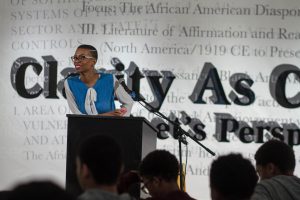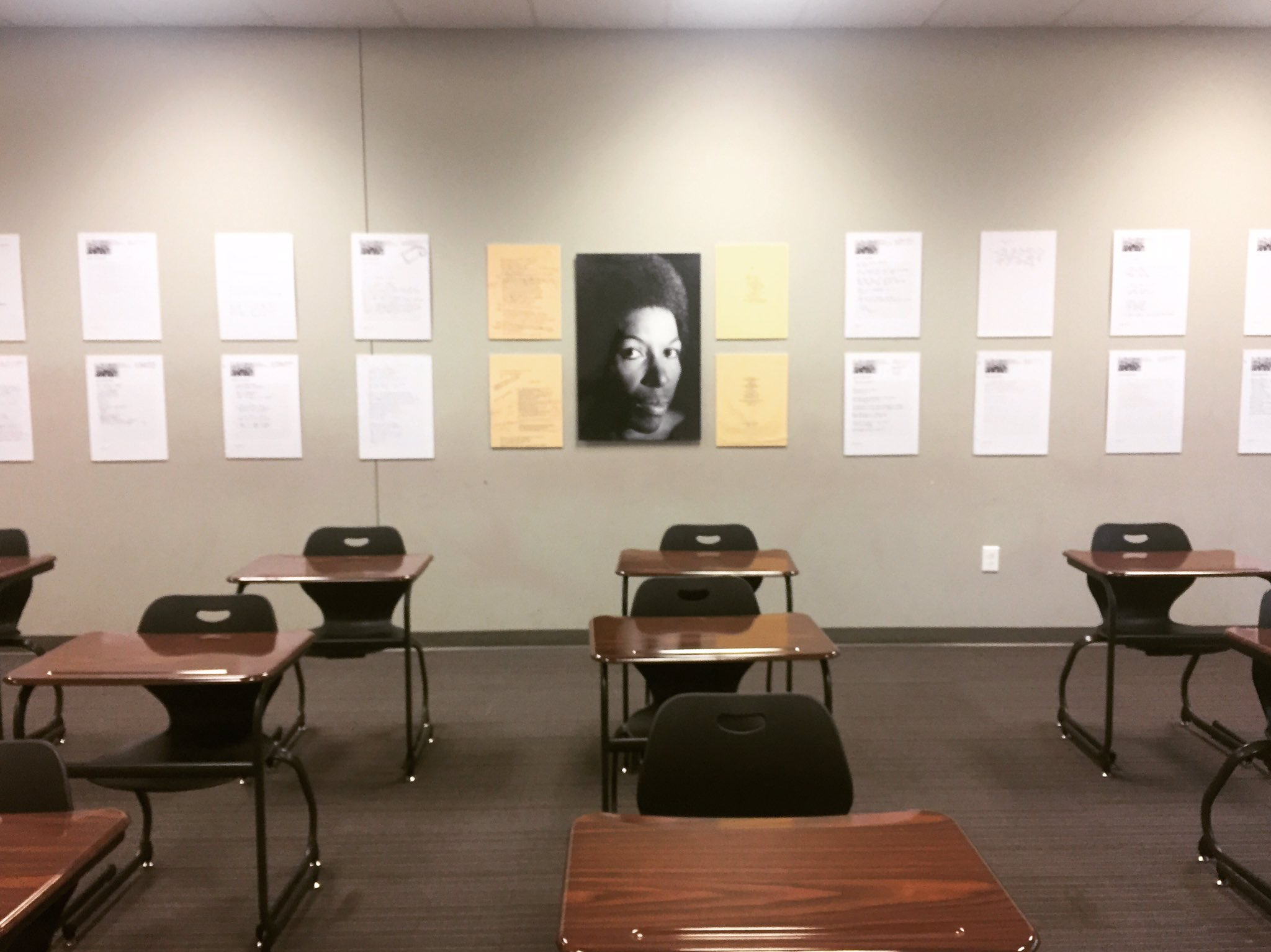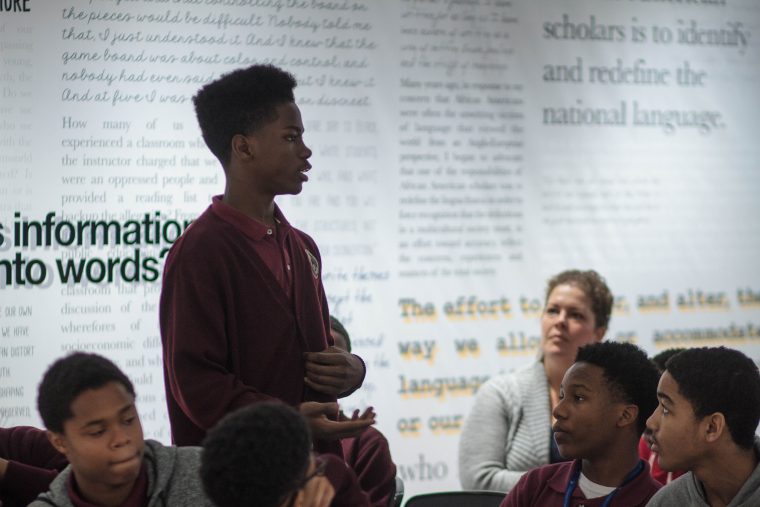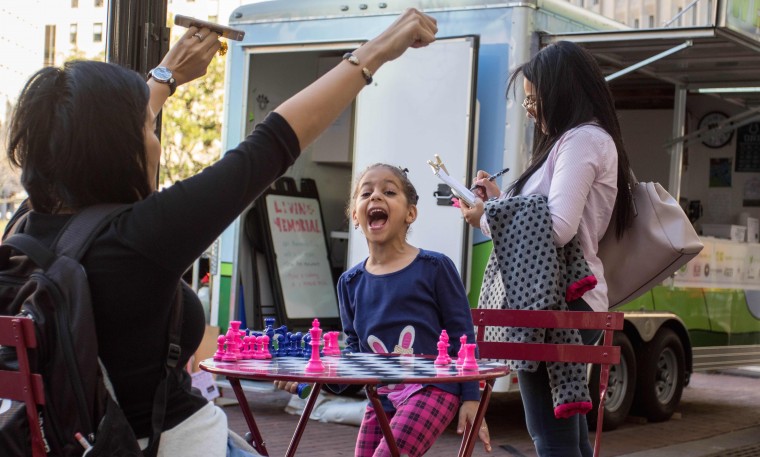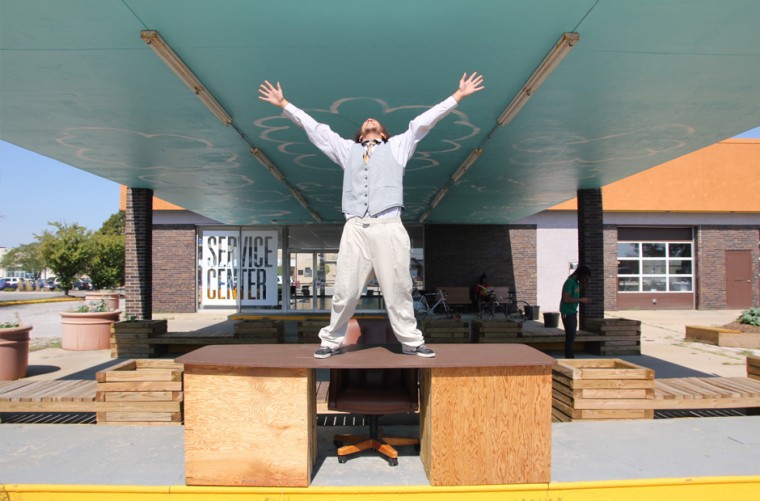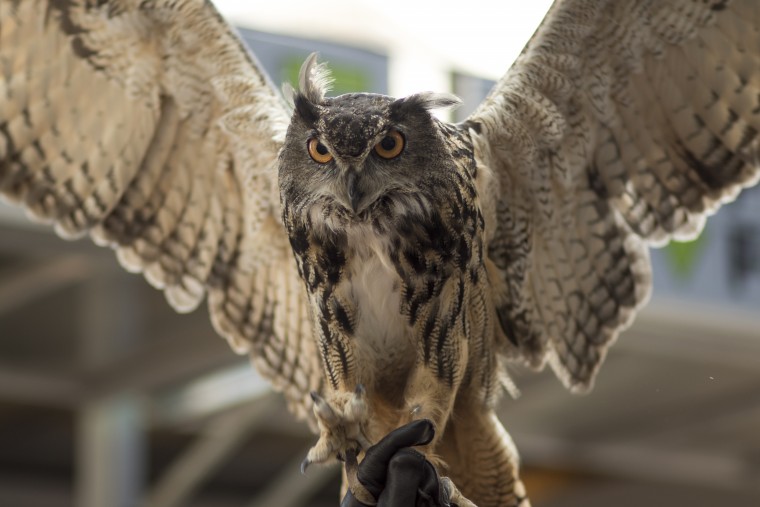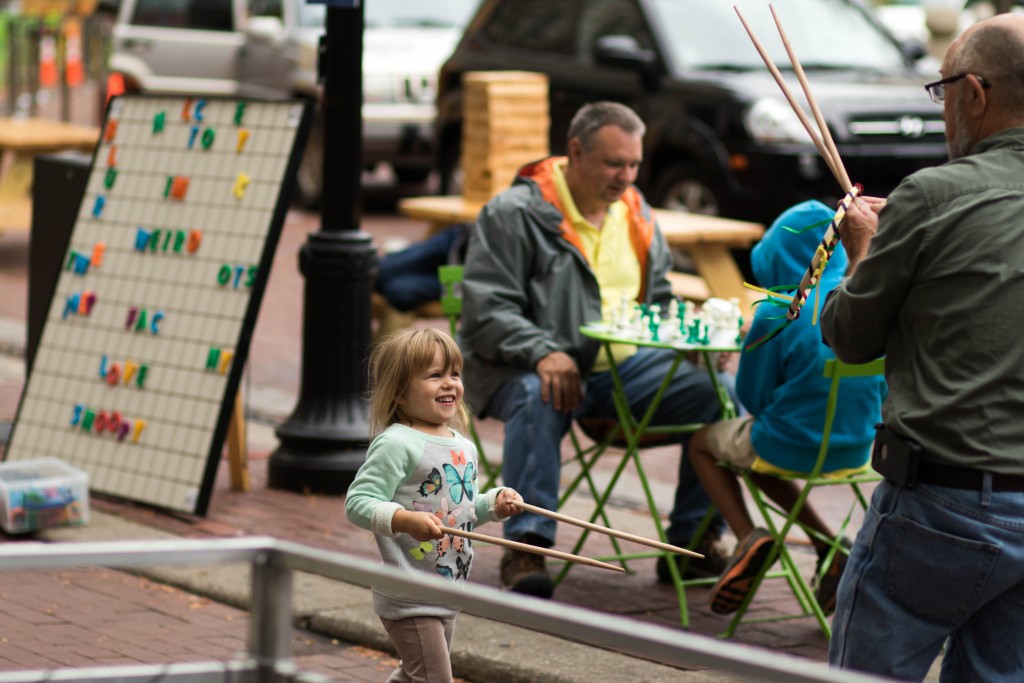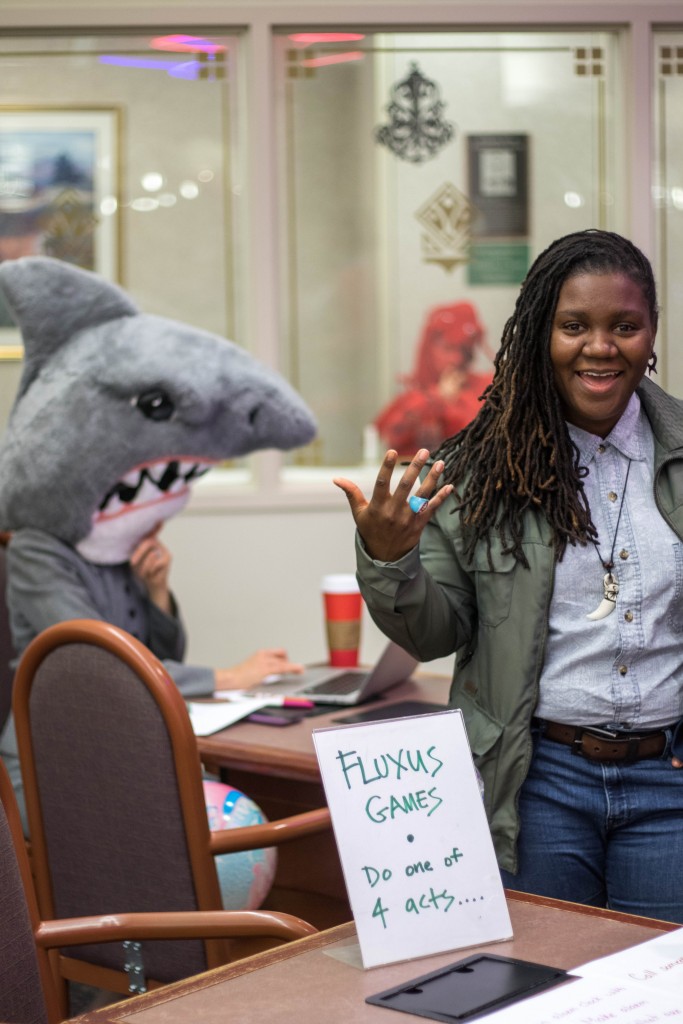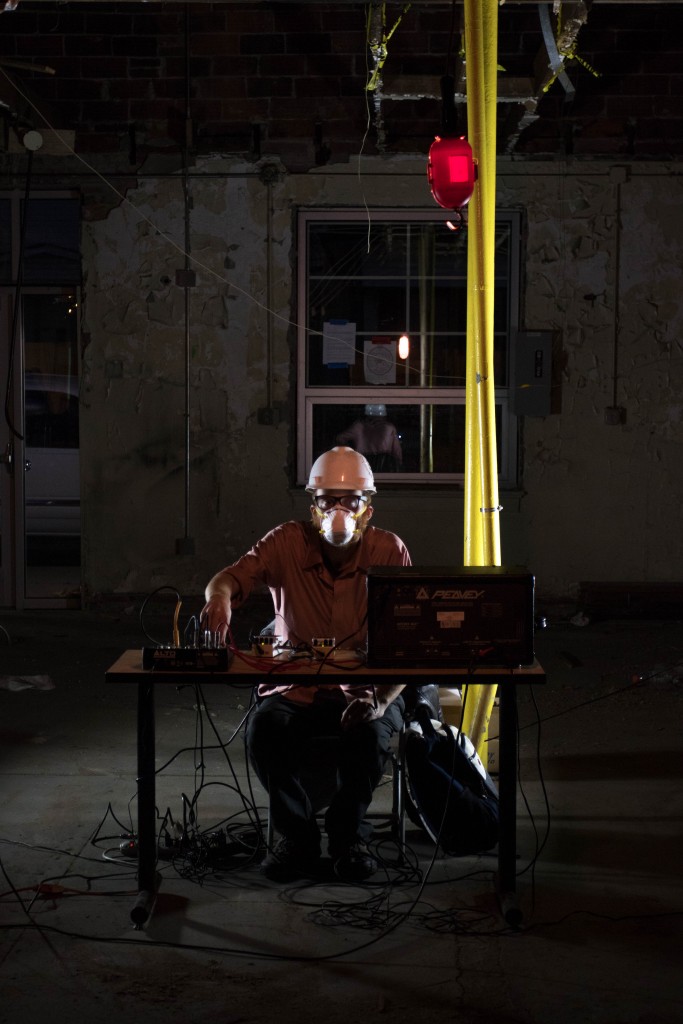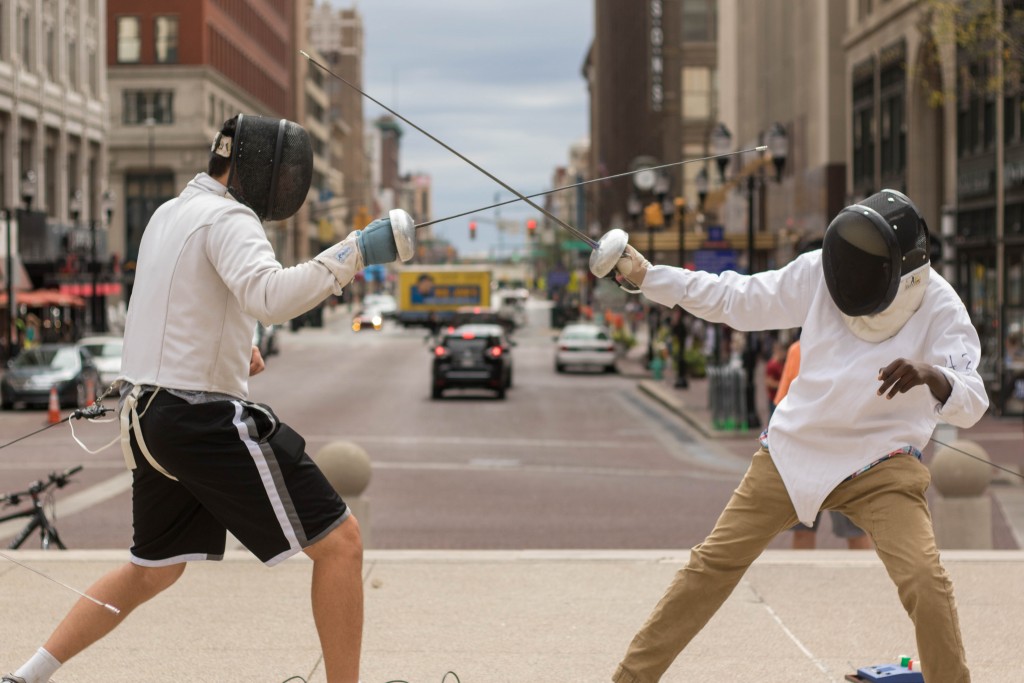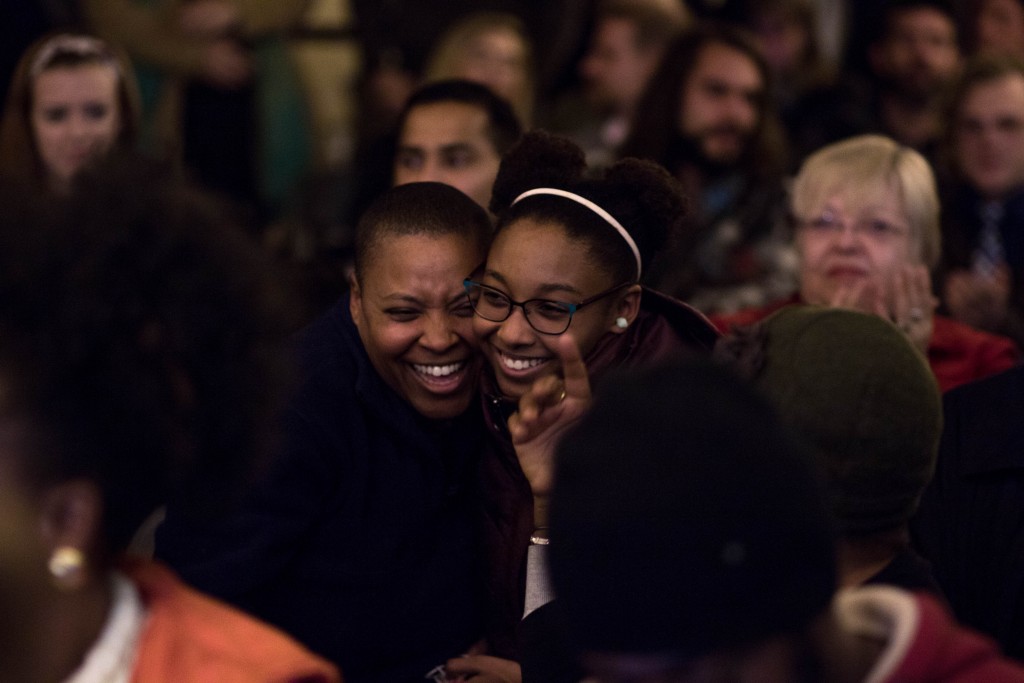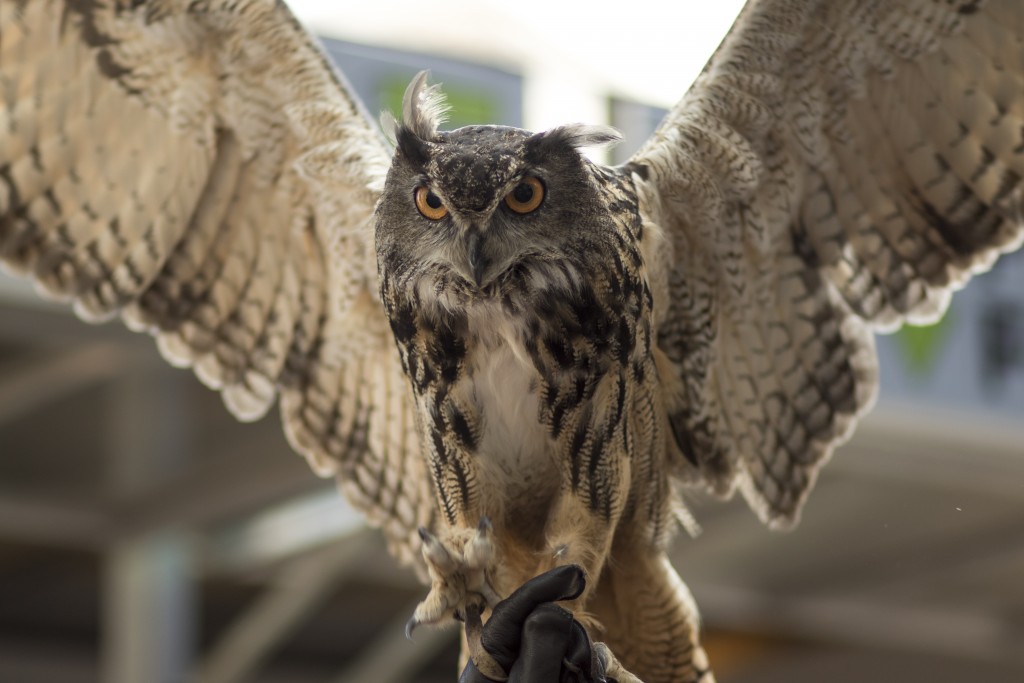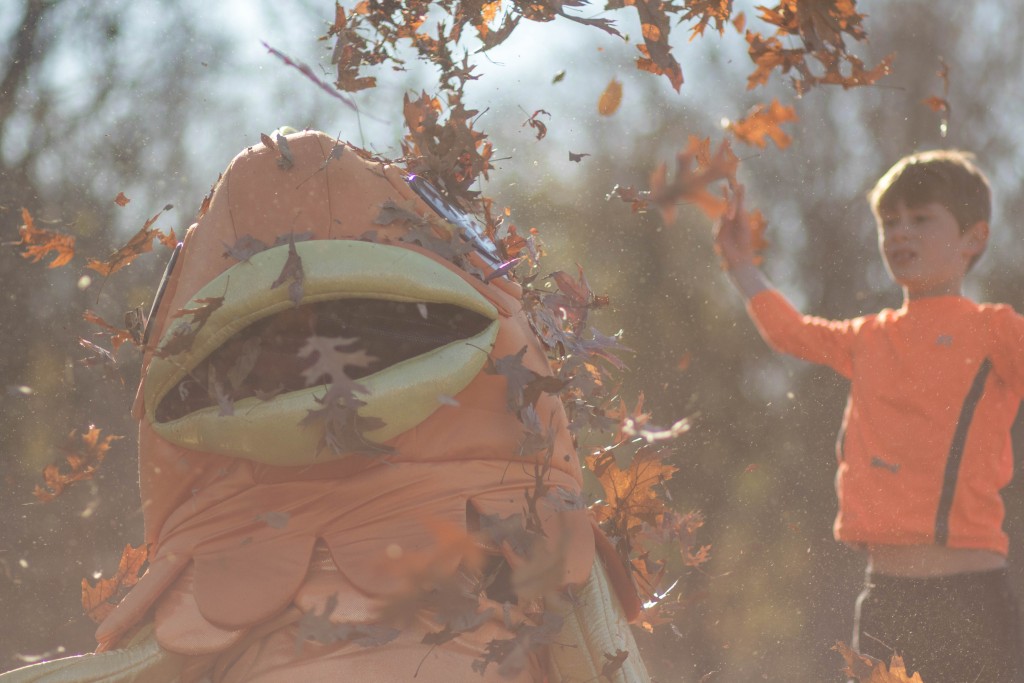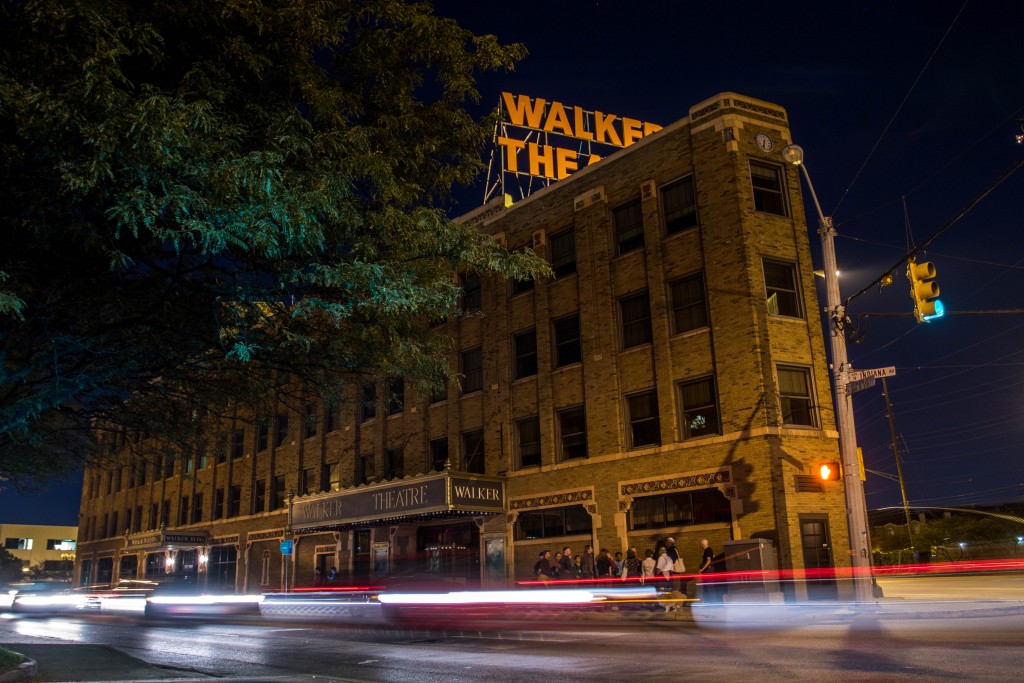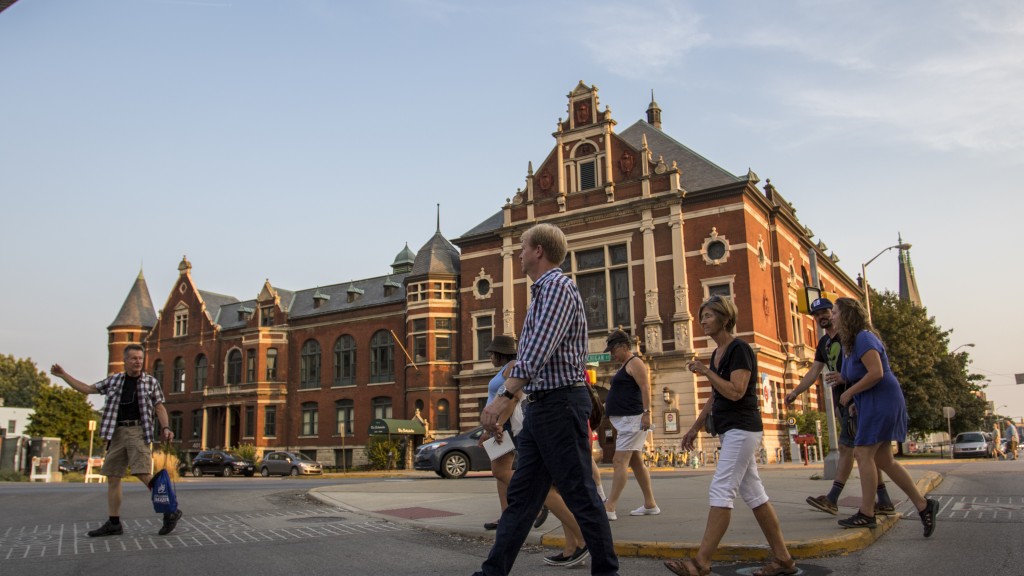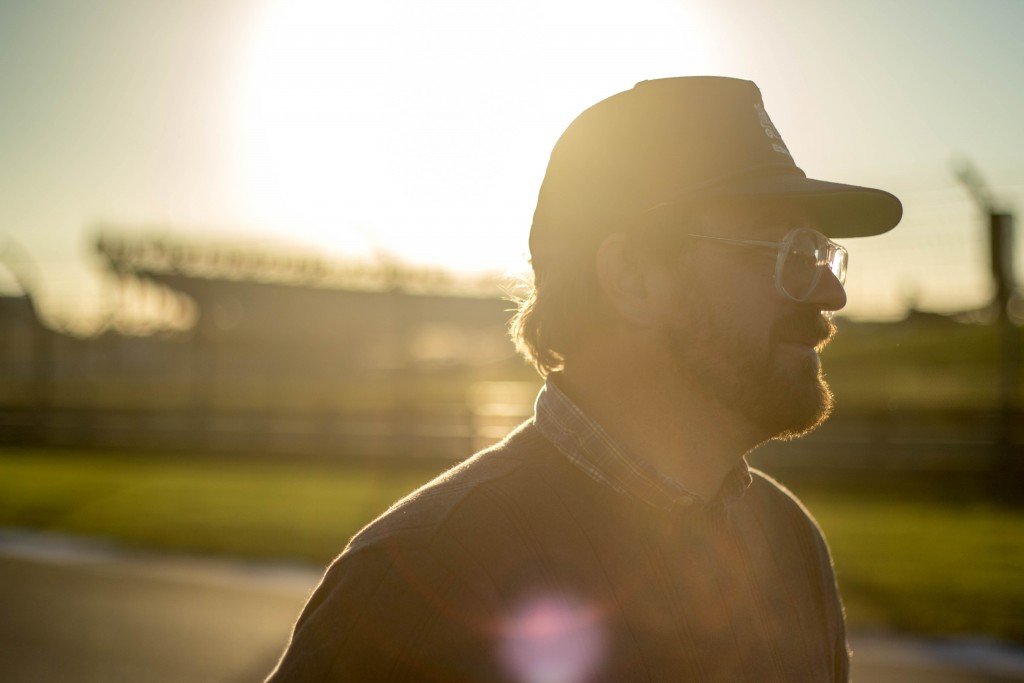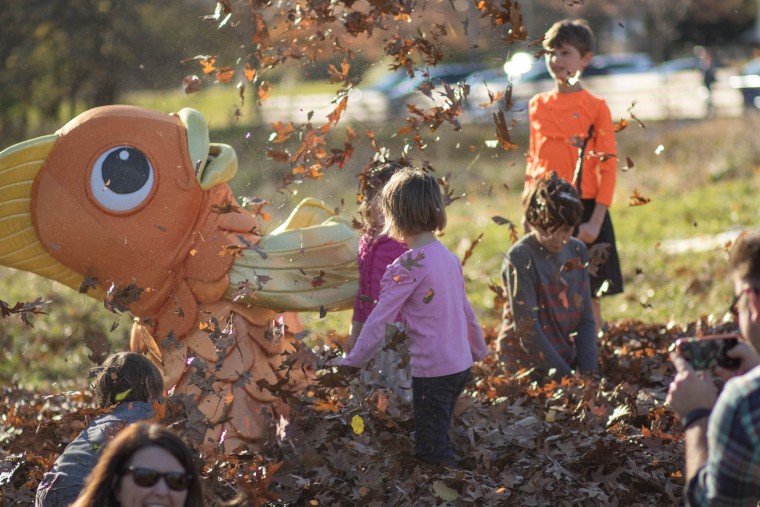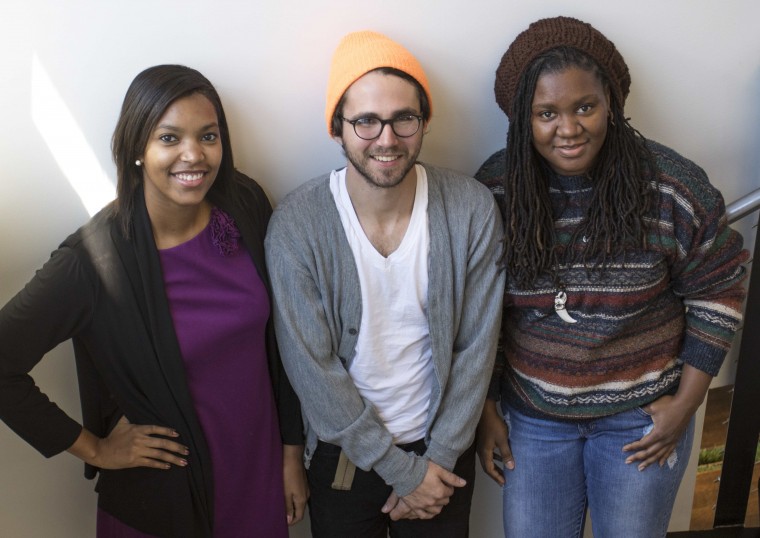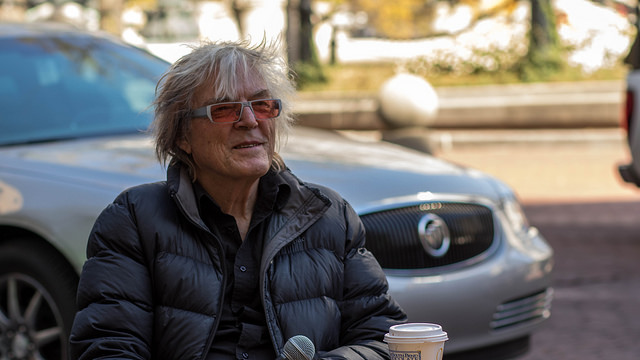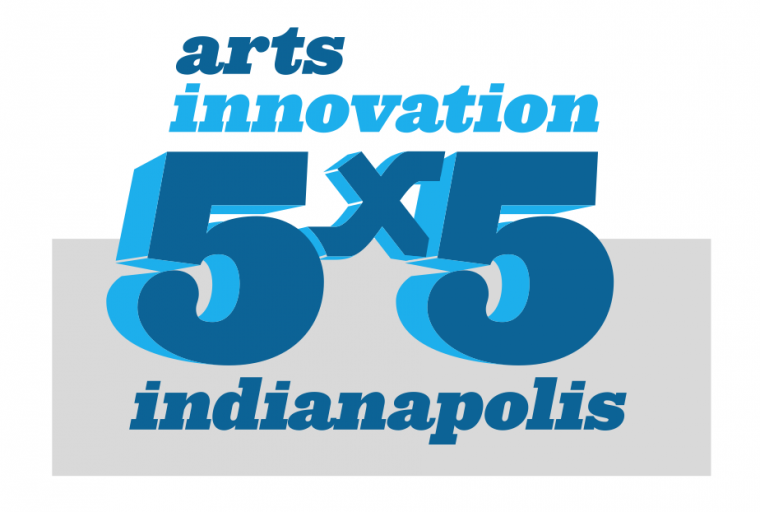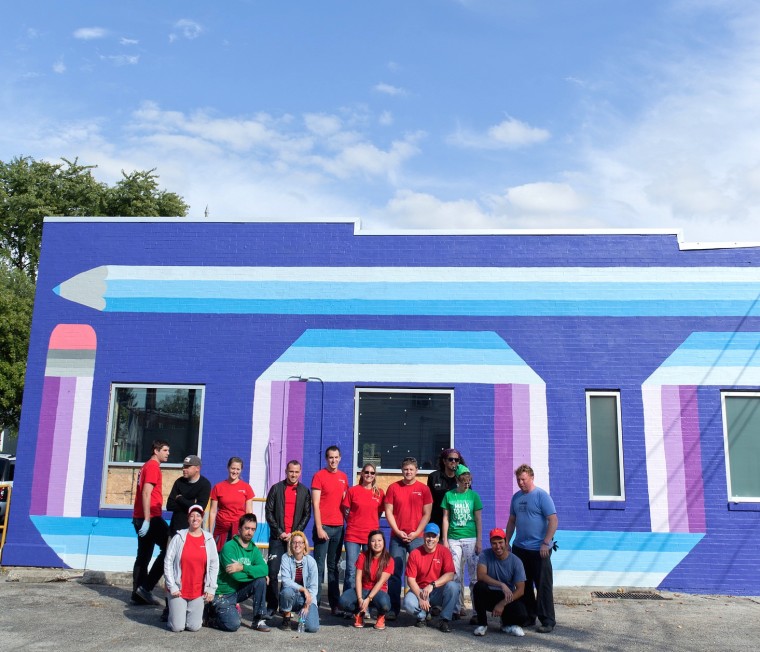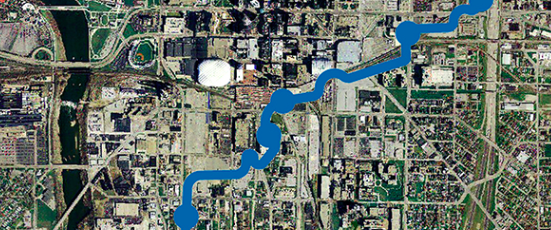A Reconnecting to Our Waterways 2015 Recap
by Alan Goffinski, ROW Creative Placemaker
Fun fact: if you travel anywhere at all in Indianapolis, you likely traverse one or more of our six major waterways on a regular basis.
“Six waterways? What are you talking about?” you may be asking. “I have seen the White River from my car window. That’s one. What about the Canal? Does the canal count?”
Yes! The Canal counts! There’s also Pogue’s Run, Pleasant Run, Fall Creek, and Little Eagle Creek. That’s quite a six-fingered handful. And just like a six-fingered hand, they fan out across our fair city, their cool waters tickling so many of our diverse and vibrant neighborhoods.
Our waterways are sometimes hard to spot as we motor home from the office at breakneck speed with the tunes up, or as we facebook our way through rush hour traffic (tsk tsk). I’ll admit that often they are difficult to spot even from a bicycle or while walking because of the overgrown invasive honeysuckle that chokes out their banks.
That’s where ROW comes in. Reconnecting to Our Waterways is a grassroots collective impact organization taking an holistic approach to our waterways for the transformation of our communities. Through generous funding from the Kresge Foundation and a partnership with Central Indiana Community Foundation, ROW is dredging our waterway system out of the dark ages of the Industrial Revolution.
Big Car Collaborative has been a long-term partner in this effort to make our waterways cultural destinations with art, nature and beauty everyday for everyone.
Now, allow me to reintroduce myself.
I am Alan Goffinski, Big Car Collaborative’s Creative Placemaker for ROW. Among other things, I have been tasked with bringing people-centric placemaking experiences to our waterways. My goal is to reverse the magnetic polarity of our waterways, so to speak. Since late 1800’s, American cities have turned their backs on the disease-ridden, malaria-infested hazards that our waterways had become. Our waterways began to repel people, communities, and development. Well, NO MORE! Let’s keep using this undervalued resource as our canvas as we paint stronger communities! The following is a recap (with great pictures) of some of the ways we have been doing that.
This series explored creative approaches to revitalizing communities and improving public places. The free series helped attendees learn about strategies and meet leading thinkers in the fields of environmental art, creative placemaking, and tactical urbanism. In pursuit of a better city, the idea is to get people together to reimagine our public spaces and bring new energy to the city’s waterways.
THE LONG BLUE LINE: DISCUSSION WITH ARTIST SEAN DERRY
In his project “Charting Pogue’s Run”, Sean Derry set out to memorialize our native waterway with a long, blue line and iron markers mapping the stream’s 1831 path. Derry will share his perspective and experience of completing such a massive public art project. This event took place in collaboration with the White River Festival.
THE POGUE’S RUN PURSUIT
A 90-minute walk lead by Artist Sean Derry took place along the historical but hidden banks of Pogue’s Run. Participants navigated old-timey maps along our modern city thoroughfares while considering the value of creativity and natural resources in our modern cities. This event took place in collaboration with the White River Festival.
ENVIRONMENTAL ART: MARY MISS
This discussion with renowned Environmental Artist Mary Miss will offered insight into her work and creative process. Additionally, the discussion focused on her StreamLines project underway now in Indianapolis.
SPARKING MONUMENT CIRCLE: ASH ROBINSON, STUART HYATT
During this casual brown-bag lunch, artists involved with Spark discussed placemaking and projects that engage people before. Artists Stuart Hyatt and Ash Robinson shared their artwork and how they engage in people-focused art. The conversation included a brief walk around Monument Circle led by Big Car’s Jim Walker.
PLACEMAKING LUNCH CONVERSATION: DAVID ENGWICHT
As Spark: Monument Circle came to a close we gathered to consider the impact of creative placemaking projects. Attendees ate lunch while having a conversation with Australian public space guru David Engwicht. We discussed the challenges and outcomes of creatively transforming our shared spaces.
RECONNECTING TO OUR WATERWAYS WORKSHOP:
This workshop invited artists to conspire for the good of their communities. Creative placemaking and tactical urbanism experts Anthony Garcia from Miami, and David Engwicht from Australia assisted artists in developing creative interventions for public space along our waterways.
STREET RECLAIMING: DAVID ENGWICHT
David Engwicht is one of the world’s most inventive thinkers and writers on creating vibrant public spaces. This presentation shared insight from his experiments in Creative Placemaking and explored how they relate to our public spaces in Indianapolis.
This project is a collaboration of many local and national artists. The Wagon of Wonders (WOW) is a tool for engaging individuals who may not have art or waterway experiences and may not know how to engage either. The Wagon of Wonders is a large interactive art trailer with one half dedicated as an artistic rendition of a bait shop. It was visually modeled after the Westside Bait and Tackle Shop, a family business that has been a hub of culture in the Indianapolis fishing community for over 50 years. When the WOW is stationed near waterways, it is stocked to loan fishing poles to kids and adults and sell bait and tackle provided by Westside. When the WOW is not near water, a waterway expert provides information, educational games, and fun experiences that bolster system wide awareness and appreciation for our waterways.
No doubt Big Car’s waterway mascot, “Big Carp” has been making a splash at a waterway near you! Big Carp is excellent at instantly transforming space, welcoming hesitant wallflower types, and partying with fun-loving people of all ages. Also, he’s good friends with Bigfoot. He often accompanies the Wagon of Wonders and is quite fond of a good dance party. Even when there is no waterway in sight, Big Carp is especially good at sparking conversation and raising awareness about our waterways. Special thanks to the local mascot maniacs at Avant Garb for enthusiastically making Big Carp a possibility.
Volunteer artists and activists engaged trail users in an impromptu finish line celebration for average, everyday canal trail users. Participants emerged from their hidden positions to surprise runners, bikers, and walkers. Unsuspecting Canal trail users were shifted out of their everyday routine mindset to begin wondering what it would be like to have more public art and trail competition in their public spaces. Everyone also got a big dose of good ol’ fashioned encouragement!
Three public readings were hosted along the bank of the White River in support of author Kevin McKelvey and Silt Loam Press’s publication of the Upper White River Bookmap. This event included location-inspired collaborative poetry and drawing exercises. This was a collaboration with White River Festival activities.
In partnership with Garfield Park Baptist Church, near the confluence of Pleasant Run and Bean Creek, the Wagon of Wonders Mobile Bait shop engaged children and adults alike in waterway education games and encouraged attendees to look to their waterways as a source of beauty and recreation
Educational programming and waterway related art games created a spotlight on the nearby Pleasant Run and celebrated the Pleasant Run Trail. Children and adults learned about the effects of erosion on our landscape and what they can do to help water quality.
Along the White River, this event celebrates local culinary culture and food production. The mobile bait shop provided a hub for creativity and a highlighted the White River amidst the festivities.
Artists were gathered to assist partygoers in the construction of sculpture pieces composed from trash that was removed from the White River. Sculptures were displayed at the City Market.
This event was a partnership between ROW, Sense Charter School, the Bates Hendricks Neighborhood Association, and local churches. The Dia de los Muertos celebration highlighted the vibrant Mexican culture of many of the neighborhood residents and Sense Charter School students at the new Barth St. pedestrian bridge. This event included invasive plant removal and bulb planting.
Is there any better way to celebrate fall than to jump into an enormous pile of leaves on the creek that shares the season’s name? This event was a partnership with Broadway Methodist church and their artists in residence. After raking the biggest leaf pile you’ve ever seen, we spent hours swan diving into it. The Wagon of Wonders made an appearance and we made some leafy art projects. Families brought picnics, lounged in hammocks, and roasted marshmallows to go with their hot cider.
Lead by Pogue’s Run artist Bre Gerard and Bloomington author Richard Wehrenberg Jr., This writer’s workshop brought a great group of writers out to explore the inspiring Pogue’s Run. After a little meeting at Rabble Coffee, we trekked down to Pogue’s Run to get some good river vibes and listen a short reading from Richard’s book, River. Afterwards, we returned to support the cozy local coffee shop for an inspired writing workshop exploring the significance of “place” and how we relate to it.
“Cool stuff! So, what’s next?”
I’m so glad you asked! One huge aspect of this Creative Placemaking endeavor is the coalescence of the creative energy in our communities around our waterways. This means identifying lead artists for all ready waterways and strategizing ways to tailor placemaking interventions to communities in specific ways that will resonate with local residents. This also involves raising up a community of artists who view their local waterway as a canvas or venue for their own brand of community-focused art. This is giving us plenty to work toward in the off-season.
BUT- don’t let ROW and Big Car off your radar this winter! There are numerous ways to get involved with ROW, starting with your local waterway committee meeting. And make sure to check in as we roll out exciting ideas that inspire our fellow Hoosiers and bring people together to reconnect to our waterways.
